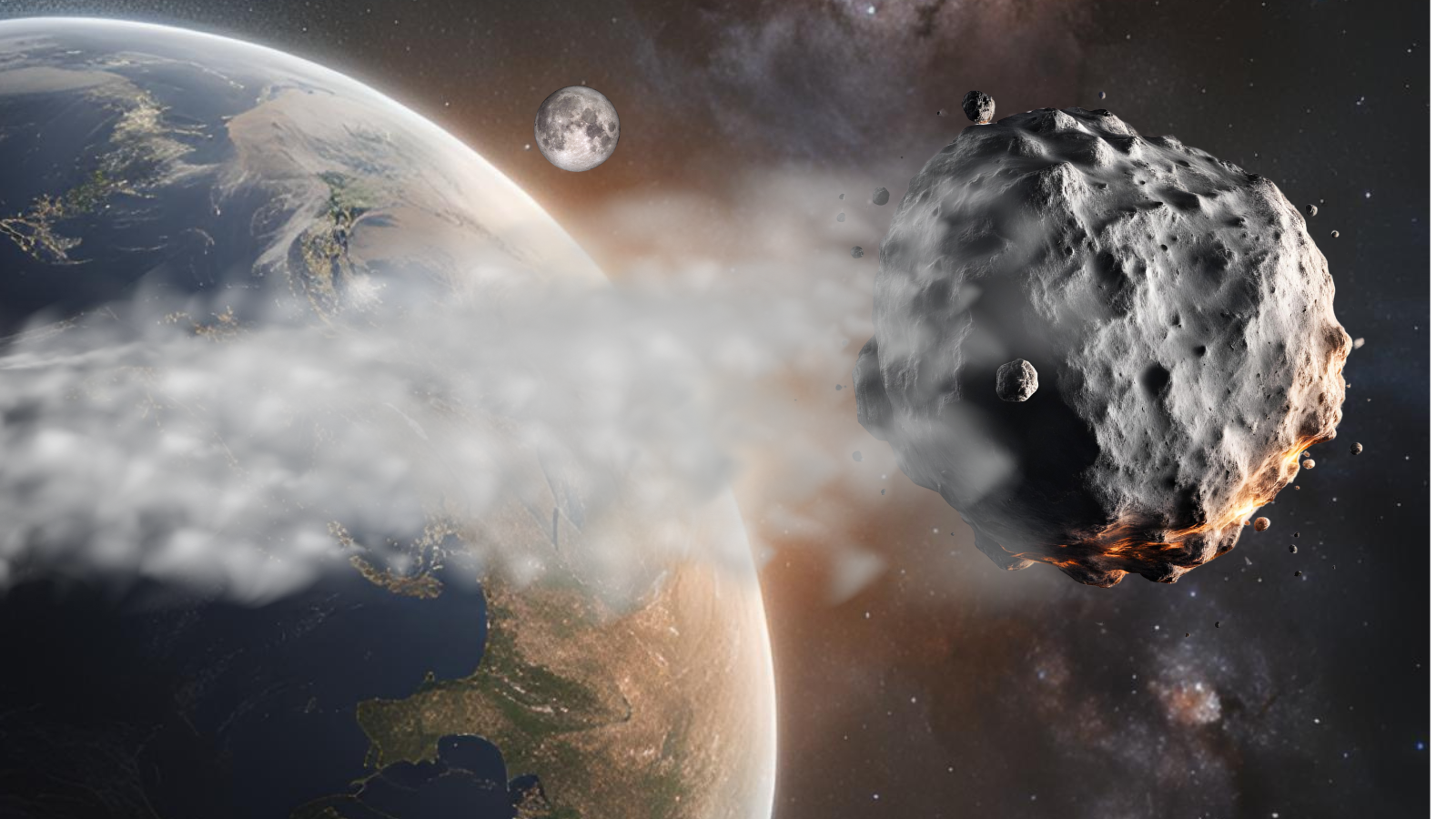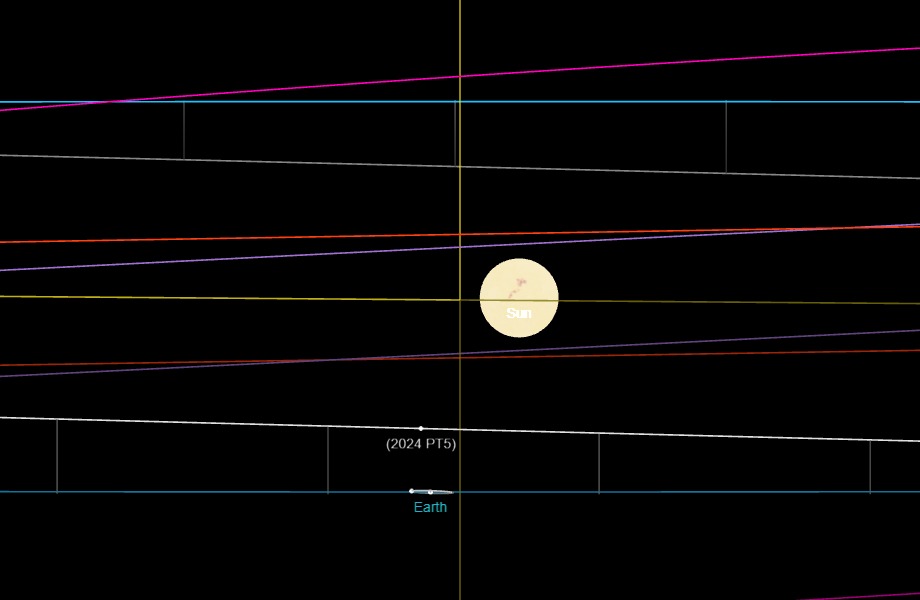Earth's mini-moon has finally departed. Will it ever return as a 'second moon?'
Asteroid 2024 PT5 didn't stick around for Thanksgiving, but don't be sad. It will be back... but will it ever be a second moon again?

For the last few months Earth has had a "second moon," albeit a much more diminutive one than our main lunar companion. Unlike the moon, this "mini-moon" was never expected to stick around.
The mini-moon is officially known as asteroid 2024 PT5. After first joining up with Earth on Sept. 29, 2024, the mini-moon left its orbit around our planet at 10:43 a.m. EST (1543 GMT) on Monday (Nov. 25), not sticking around long enough to celebrate Thanksgiving on Thursday (Nov. 28).
But don't be sad about this departure. The 37-foot-wide (11.2 meters) asteroid, equal to six stacked Arnold Schwarzeneggers, will be back just like Arnie in "The Terminator." The question is, will 2024 PT5 enjoy another spell as a second moon around Earth?
During the occupation of asteroid 2024 PT5 around Earth, Space.com has been corresponding with one of the scientists who discovered its trajectory and its status as a mini-moon, Carlos de la Fuente Marcos of the Universidad Complutense de Madrid.
Marcos is part of a team that studies mini-moon capture events. They routinely monitor newly discovered objects and spotted the peculiar dynamic properties of 2024 PT5. He was also integral in the study of 2024 PT5 during its time around Earth which revealed that the mini-moon was likely created when an impact dislodged a boulder from the moon.
Marcos explained to Space.com that this asteroid is usually part of the Arjuna asteroid belt, a secondary asteroid belt composed of objects that circle the sun in orbits very similar to that of Earth. These Arjuna asteroids usually sit at an average distance of about 93 million miles (150 million kilometers) from the solar system's central star.
"Objects in the Arjuna asteroid belt are part of the near-Earth object population of asteroids and comets," Marcos explained in September, adding that if these asteroids approach Earth at a close range of around 2.8 million miles (4.5 million km) approaching at low velocities of around 2,200 miles per hour (3,540 km/h), they can be gravitationally captured by Earth.
Get the Space.com Newsletter
Breaking space news, the latest updates on rocket launches, skywatching events and more!
"You may say that if a true satellite is like a customer buying goods inside a store, objects like 2024 PT5 are window shoppers," he continued.
Return of a cosmic window shopper
Using the NASA JPL small body lookup database, it is possible to examine the next few approaches of 2024 PT5 to at least provisionally see if any will meet the criteria needed for its capture.
According to the database, which contains details of the orbits of over 3.3 million known asteroids and comets, the next time that 2024 PT5 makes a close approach to Earth will be on Jan. 9, 2025. At this time, the asteroid will come to within around 1.1 million miles (1.8 million km) of Earth, and it will be traveling at around 2,300 mph (3,700 kph).
That means during this visit, which will also see it make a close approach to the moon a few days later, the asteroid may be traveling slightly too fast to be gravitationally snared by Earth.

After this, astronomers will then have to wait a while for the next return of 2024 PT5, with its next close approach set for Nov. 8, 2055.
At that time, the asteroid will make a slower approach, traveling at just 1,498 mph, but it will only come to within 3.3 million miles of Earth. That means the approach in 2055 may be just a little too wide for 2024 PT5 to be snared by Earth as a mini-moon.
"As for the future, it is virtually certain that it will return in 2055. Using the latest data, it will have negative total geocentric energy [needed for gravitational capture to occur] from late on October 6 until early on October 14, 2055," Marcos said. "However, at this time, it will remain at 3.3 million miles [5.3 million km] from Earth. It will not become a temporary satellite of Earth because it will remain beyond 28 million miles [45 million km] from our planet. With the previous orbit determination, it would have been captured in 2055; with the newest data, the capture event will not take place."
After this, the next few encounters between Earth and 2024 PT5 are subject to large uncertainties because of how far in the future they project the orbit of this small body. Currently, it seems that the next close encounter with 2024 PT5 will come after a further 29 years on Jan. 7, 2084, when the asteroid will come to within an estimated distance of around 1 million miles of Earth, again at a speed of around 2,300 mph (3,700 kph).
The asteroid will then quickly return to Earth on May 8, 2084, when it will come within around 2 million miles of our planet at an estimated speed of 2,013 mph (3,240 kph). That means this visit in just over 59 years, at least numerically and at the moment, seems most likely to see 2024 PT5 become a mini-moon for Earth again.
However, don't fear if you don't fancy waiting around for six decades to experience the excitement of another mini-moon capture.
Marcos pointed out that the long-term capture of mini-moons is fairly rare; there are only two on record: 2006 RH120 and 2020 CD3, which each orbited for about a year. However, short-term captures that last just a few weeks, like that of 2024 PT5, are fairly common, with several of these events, on average, occurring per decade.
That's why the researcher isn't feeling sentimental about the departure of 2024 PT5 despite his important work with the space rock.
"I won't really be sad to see 2024 PT5 go; mini-moons come and go as they wish. I am just waiting for the next one," Marcos said. "That wait will not be long; the next capture will probably happen within the next few months. The ongoing Near Earth Object surveys are now sensitive enough to pick up these objects on a regular basis."
Join our Space Forums to keep talking space on the latest missions, night sky and more! And if you have a news tip, correction or comment, let us know at: community@space.com.

Robert Lea is a science journalist in the U.K. whose articles have been published in Physics World, New Scientist, Astronomy Magazine, All About Space, Newsweek and ZME Science. He also writes about science communication for Elsevier and the European Journal of Physics. Rob holds a bachelor of science degree in physics and astronomy from the U.K.’s Open University. Follow him on Twitter @sciencef1rst.









